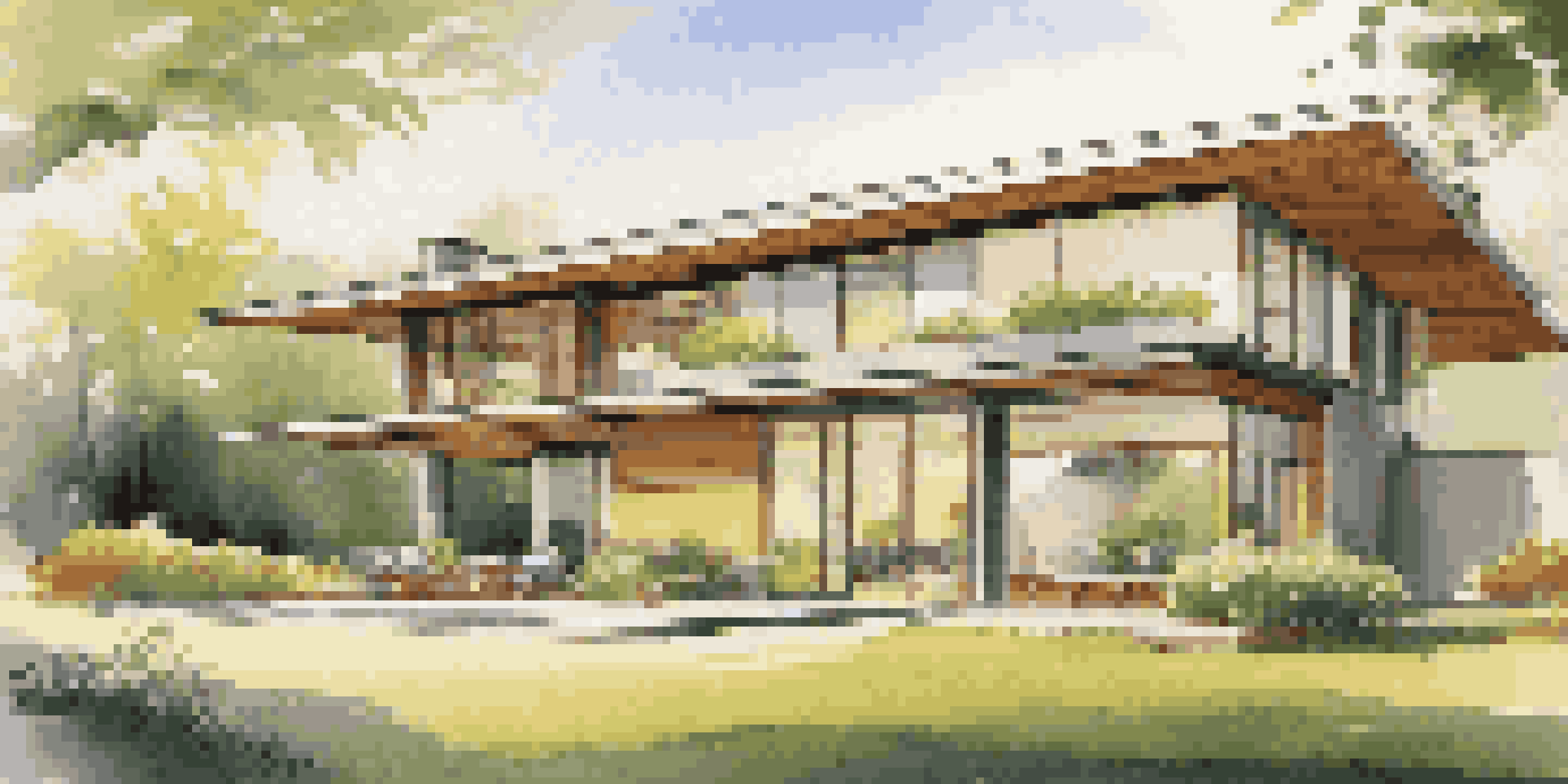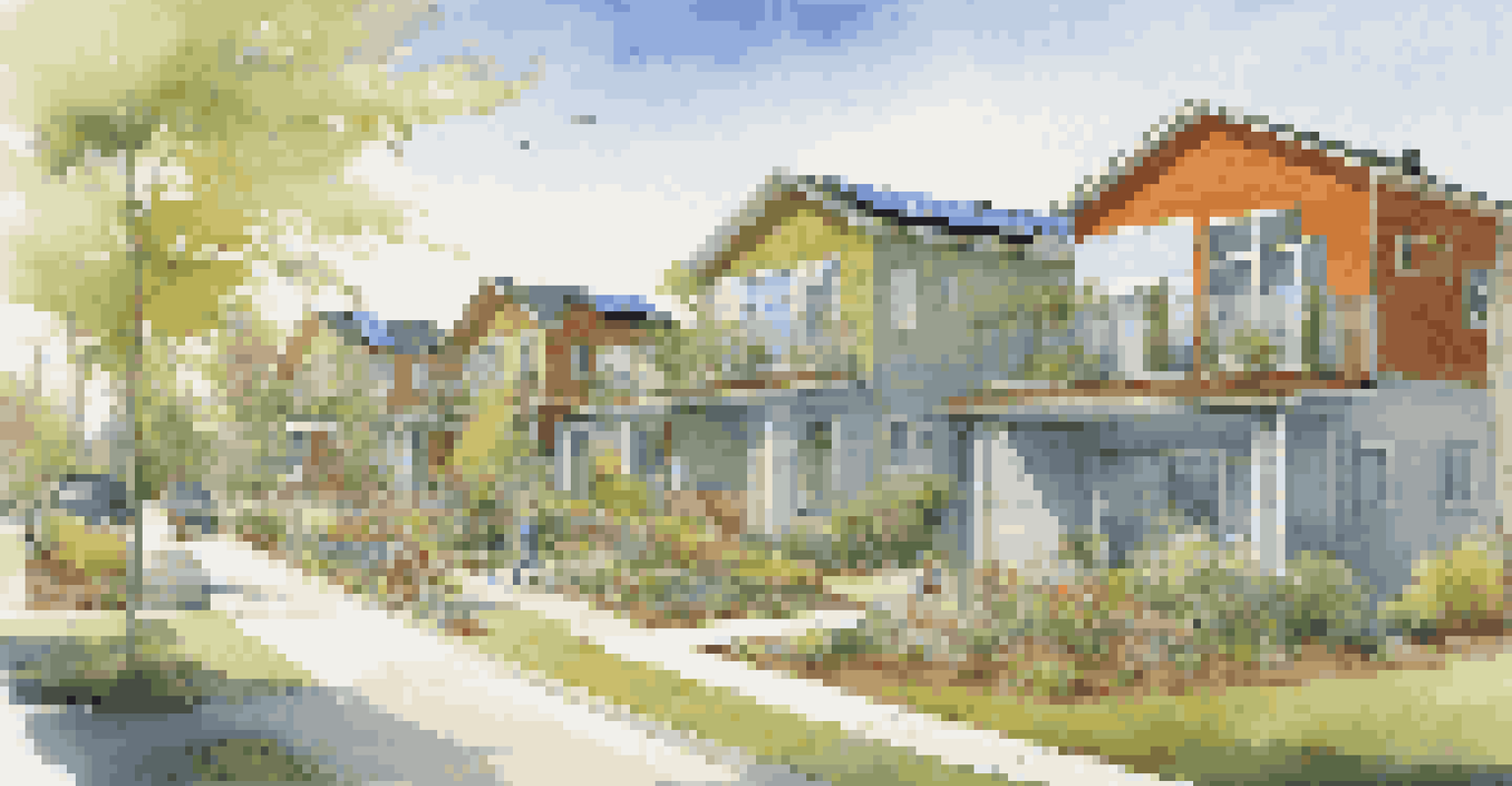The Role of Energy Efficiency in Modern Home Design

Understanding Energy Efficiency in Home Design
Energy efficiency in home design refers to using less energy to provide the same level of comfort and functionality. This concept is increasingly important as homeowners seek to reduce their carbon footprint while saving on energy bills. By incorporating energy-efficient elements, such as insulation and energy-efficient appliances, homes can operate more sustainably.
Energy efficiency is not just about saving money. It’s also about being responsible stewards of the environment for future generations.
This approach not only benefits the environment but also enhances the overall quality of life for residents. Energy-efficient homes often feature better air quality, consistent temperatures, and reduced noise levels. These improvements make living spaces more comfortable and inviting.
In essence, energy efficiency is about smarter design choices that prioritize both sustainability and comfort. As we dive deeper into this topic, we'll explore how modern materials and technologies play a crucial role in achieving these goals.
The Benefits of Energy-Efficient Homes
The advantages of energy-efficient homes extend beyond mere cost savings on utility bills. Homeowners can enjoy lower maintenance costs, increased property value, and a reduced environmental impact. With energy-efficient features, homes are often more appealing to potential buyers, making them a wise investment.

Additionally, energy-efficient homes can contribute to improved health and well-being. For instance, better insulation can lead to fewer drafts and more consistent indoor temperatures, which can reduce the likelihood of respiratory issues caused by mold or mildew. This creates a healthier living environment for families.
Energy Efficiency Saves Money
Investing in energy-efficient home design not only reduces utility bills but also increases property value and lowers maintenance costs.
Ultimately, the benefits of energy efficiency are multifaceted. By investing in energy-efficient designs, homeowners not only save money but also contribute positively to their health and the planet.
Key Features of Energy-Efficient Home Design
Energy-efficient homes often include features like high-quality insulation, energy-efficient windows, and smart home technology. These elements work together to minimize energy loss and optimize energy use. For example, triple-glazed windows provide excellent insulation, keeping heat in during winter and out during summer.
The best way to predict the future is to create it.
Another important feature is the use of energy-efficient appliances, which consume less energy than their traditional counterparts. This includes everything from LED lighting to ENERGY STAR-rated refrigerators. By replacing older models with more efficient options, homeowners can significantly reduce their energy consumption.
Additionally, smart home systems can automate energy use based on occupancy and time of day. This means lights and heating can be adjusted automatically, ensuring energy is not wasted. These features collectively contribute to a more sustainable and efficient home.
The Role of Renewable Energy in Home Design
Incorporating renewable energy sources, such as solar panels, has become a staple in modern energy-efficient home design. Solar panels harness sunlight to generate electricity, reducing reliance on fossil fuels. This shift not only lowers energy costs but also contributes to a more sustainable energy grid.
Furthermore, some homes are designed to be 'net-zero,' meaning they produce as much energy as they consume over a year. By integrating solar energy and energy-efficient practices, homeowners can achieve this balance. This is not just a trend; it's becoming a goal for many in the industry.
Renewable Energy Enhances Sustainability
Incorporating renewable energy sources, like solar panels, allows homeowners to minimize their reliance on fossil fuels and achieve net-zero energy consumption.
By embracing renewable energy sources, homeowners can take control of their energy use and contribute to combating climate change. This evolution in home design emphasizes the importance of sustainability in our daily lives.
Smart Home Technology and Energy Efficiency
Smart home technology is revolutionizing how we interact with our living spaces, particularly when it comes to energy efficiency. With smart thermostats, homeowners can program their heating and cooling systems to optimize energy use, adjusting temperatures based on their schedules. This not only saves energy but also enhances comfort.
Moreover, smart lighting systems allow users to control lighting remotely or set schedules, ensuring lights are only on when needed. This reduces energy waste and can lead to significant savings over time. The integration of these technologies creates a seamless blend of convenience and efficiency.
As technology continues to advance, we can expect even more innovative solutions that promote energy efficiency. Embracing these tools can empower homeowners to make informed choices about their energy use, ultimately leading to a more sustainable lifestyle.
Sustainable Materials in Home Design
The choice of materials plays a crucial role in energy-efficient home design. Sustainable materials, such as bamboo flooring or recycled steel, not only reduce environmental impact but often perform better than traditional options. For instance, bamboo grows rapidly and absorbs carbon dioxide, making it an eco-friendly choice.
Additionally, using local materials can further enhance sustainability by reducing transportation emissions. This supports local economies and often results in unique design elements that reflect the surrounding environment. Homeowners can take pride in knowing their home is built from resources that are both beautiful and responsible.
Smart Technology Optimizes Efficiency
Smart home technologies, such as programmable thermostats and automated lighting, help homeowners manage energy use more effectively, leading to greater comfort and savings.
Sustainable materials can also improve a home's energy efficiency by providing better insulation or durability. Investing in these materials is not just a trend; it's a forward-thinking approach to building that prioritizes the planet's future.
The Future of Energy-Efficient Home Design
As we look to the future, the emphasis on energy efficiency in home design will only continue to grow. With rising energy costs and increasing awareness of climate change, homeowners are more motivated than ever to adopt sustainable practices. This shift in mindset is driving innovation in the industry.
Architects and builders are now prioritizing energy-efficient designs that not only meet current standards but exceed them. This includes exploring new technologies, such as energy storage systems that allow homeowners to store excess energy produced from renewable sources. Such advancements pave the way for even greater efficiency.

Ultimately, the future of home design is bright, with a clear focus on sustainability. By embracing energy efficiency, we can create homes that are not only functional but also reflect our commitment to a healthier planet.